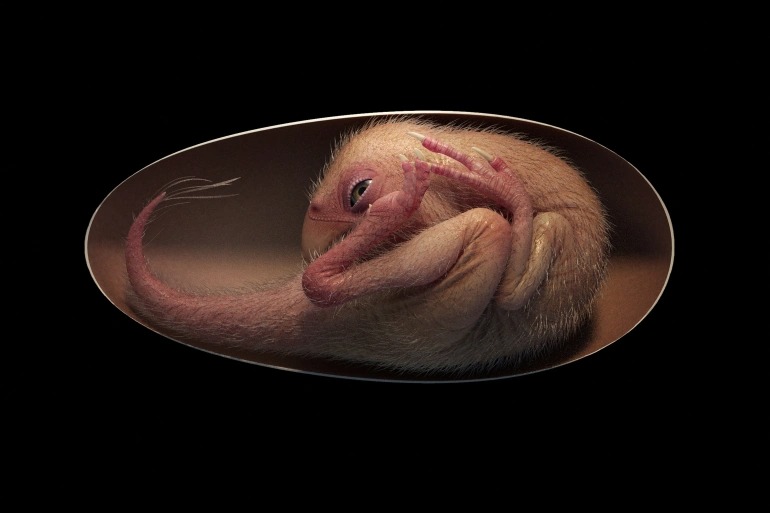For all the dinosaur fans out there, scientists have made an exciting announcement. They have discovered a dinosaur embryo that is exquisitely preserved. Scientists date the embryo as 66 million years old at least. The embryo was just about to hatch from the egg and looks similar to a chicken.
Researchers found this fossil of a hatchling dinosaur in southern China’s Ganzhou in the Jiangxi Province. It belongs to a species known as the oviraptorosaur or a kind of theropod dinosaur that did not have any teeth. Researchers have nicknamed the embryo “Baby Yingliang”.
The Dinosaur Fossil Was In Storage For Several Decades Ago
The dinosaur embryo was one among several fossils of dinosaur eggs that were hidden in storage for several decades. Researchers had got their hands on it in 2000.

Researchers working for Yingliang Group, a stone-mining company, suspected a stone sample to contain egg fossils[1]. However, they kept it stored away for about a decade. It was re-discovered only when the Yingliang Stone Natural History Museum began to be built. Upon discovering boxes filled with such fossils, experts began to sort them.
China University of Geoscience’s Lida Xing said:
“Museum staff identified them as dinosaur eggs and saw some bones on the broken cross-section of one of the eggs.”
The team of researchers had scrapped off portions of the eggshell to confirm their suspicion.
This is also the reason behind naming the embryo as “Baby Yingliang”. Fossilized eggs of dinosaurs are not exactly rare finds. However, such an immaculate embryo is unprecedented. Researchers stated that this is one of the rarest finds.
Details Of The Dinosaur Embryo
Baby Yingliang spans 10.6 inches (27 cm) in length from its head to its tail. Its egg has a length of 6.6 inches (17 cm). It is currently residing at the Yingliang Stone Nature History Museum.
Researchers suggest that the dinosaur embryo is somewhere between 72 million and 66 million years old. They also believe that a surprise mudslide had buried this egg. As such, scavengers had failed to destroy it for this long.
Oviraptorosaurs were dinosaurs that had feathers. Its name means “egg thief lizards”. They were alive during the Late Cretaceous period in present-day North America and Asia.
Their diets and beak shapes varied. Their sizes also varied immensely. Some species were as small as modern turkeys, while some were enormous Gigantoraptors, which could be 26 feet (8 m) long.
Baby Yingliang would probably have grown to somewhere between 6.5 and 9.8 feet (2 and 3 m) when it reached adulthood. It probably would have been an herbivore.
One of the researchers, University of Edinburgh’s Professor Steve Brusatte, called it among the most beautiful fossils he has ever seen. [2]
The Significance Of The Fossil
Fion Waisum Ma, one of the authors of a paper on the fossil, called it “one of the best dinosaur embryos ever found in history.”

The position of the baby is of utmost importance to the researchers. They found that the baby’s head was positioned underneath its body. Furthermore, its back was curled and its feet were on either side of the body. This embryonic posture has never been seen in dinosaur embryos before. However, it is similar to how present-day bird embryos.
In today’s birds, the central nervous system of the embryo controls this embryonic positioning. “Tucking” is its name. Chicks that are about to hatch tuck their head beneath their right-wing. This keeps their head stable as they break open the egg using their beak.
Embryos that do not tuck are more likely to die following unsuccessful hatching. Ma said that this was a clear indication of the relation between modern birds and dinosaurs:
“This indicates that such behavior in modern birds first evolved and originated among their dinosaur ancestors.”
Professor Brusatte further explained the connection:
“This little prenatal dinosaur looks just like a baby bird curled in its egg, which is yet more evidence that many features characteristic of today’s birds first evolved in their dinosaur ancestors.”
However, the dinosaur embryo is yet to be studied in detail. The team of researchers hopes to do that soon using advanced scanning technology. It will unearth a complete picture of the embryo’s skeleton, including the skull.